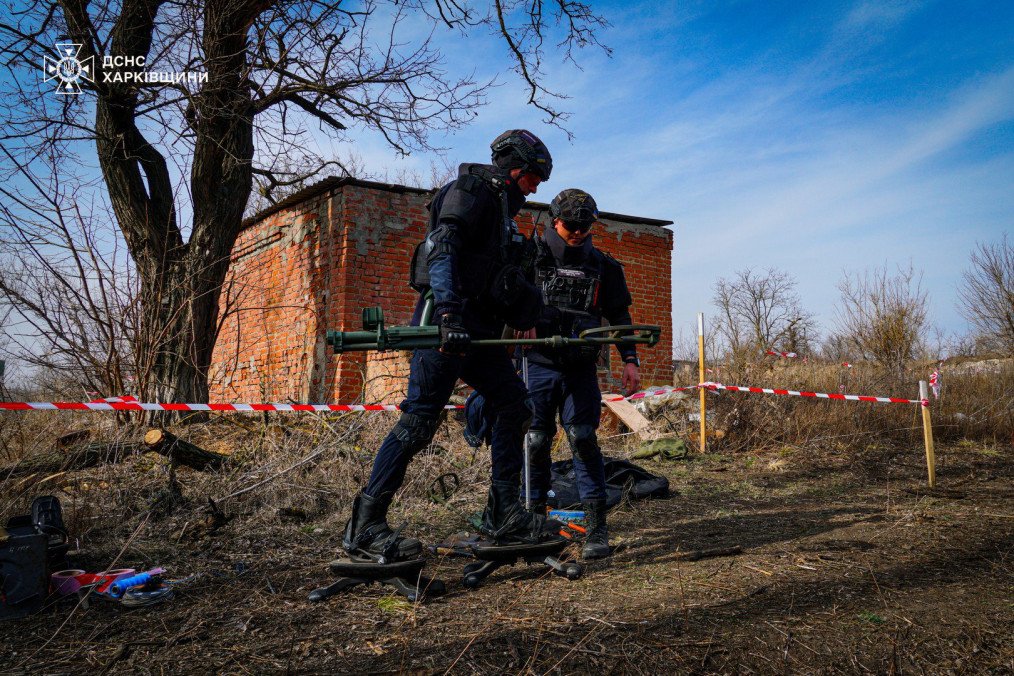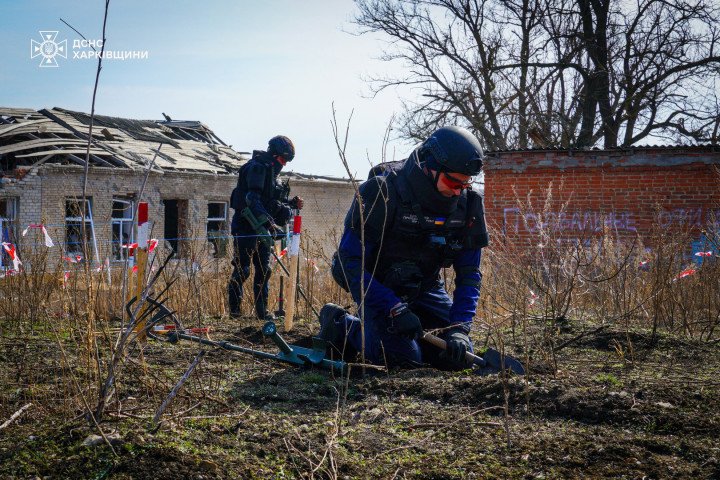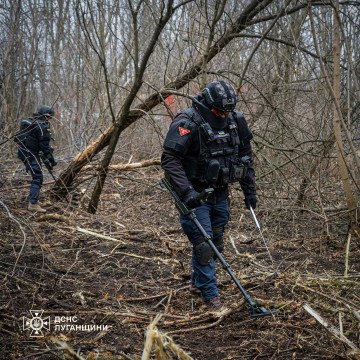- Category
- Latest news
Russian Mines Kill 335 Ukrainians, Including 18 Children, Amid Full-Scale Invasion

Since the beginning of Russia’s full-scale invasion, there have been 811 incidents involving civilians due to explosive remnants of war. A total of 1,158 people have been affected, including 335 fatalities. Among the killed are 18 children.
This was reported by the Ministry of Defense of Ukraine on April 8, citing Colonel Oleh Shuvarskyi, Head of the Mine Action Department and Deputy Head of the Main Department of Mine Action, Civil Protection, and Environmental Safety, during a workshop organized by the Ministry of Defense of Ukraine with the support of the OSCE.
According to Shuvarskyi, the threat from explosive objects affects the lives of over 6 million Ukrainians, particularly in the newly liberated territories.
-b1fca3417299eb24d410193f353d4696.jpg)
The Colonel noted that the Russian forces often place mines indiscriminately, including in agricultural fields, residential areas, and on public roads. Mines account for 75% of all incidents.
The most heavily contaminated regions remain Kharkiv, Mykolaiv, and Kherson, where over 50% of all incidents have occurred.
“An especially serious threat during the clearance of de-occupied territories from explosive remnants of war and while carrying out humanitarian demining operations comes from cluster munition elements, due to incidents specifically related to their detonation,” Shuvarskyi said.
“The use of such munitions by the Russians blocks recovery efforts in these areas, including the restoration of transportation infrastructure, heat, gas, and water supply systems, as well as power lines and other essential facilities for the survival of de-occupied regions.”

The official emphasized that the poor quality of engineering munitions and their long-term storage lead to malfunctions in the self-destruct mechanisms of some types of these munitions.
“Such munitions are unpredictable and extremely dangerous. Furthermore, many modern Russian mines are equipped with seismic and magnetic sensors, significantly complicating the process of neutralizing them,” Shuvarskyi added.
Shuvarsky noted that a large number of modern mines are made with plastic casings and contain few metallic elements, making them significantly harder to detect, especially with mine detectors.


Moreover, according to the Russian guidelines, a certain number of mines are designed for non-removal and are used as booby traps, which also requires considerable time, expertise, and practical skills for their neutralization.
The Head of the Mine Action Department also informed the participants of the workshop “Current Challenges and Innovative Approaches in Mine Action” that since the beginning of the full-scale aggression, the demining units of the Security and Defense Forces have detected and destroyed nearly 920,000 explosive objects.
On April 4, marking the International Day for Mine Awareness and Assistance in Mine Action, Ukraine’s official fundraising platform UNITED24 launched a major campaign to raise $1.5 million for humanitarian demining in three heavily contaminated regions.
-c6522ae9e5320af1cc92504c0aaa1b34.png)
-f88628fa403b11af0b72ec7b062ce954.jpeg)

-72b63a4e0c8c475ad81fe3eed3f63729.jpeg)





-111f0e5095e02c02446ffed57bfb0ab1.jpeg)